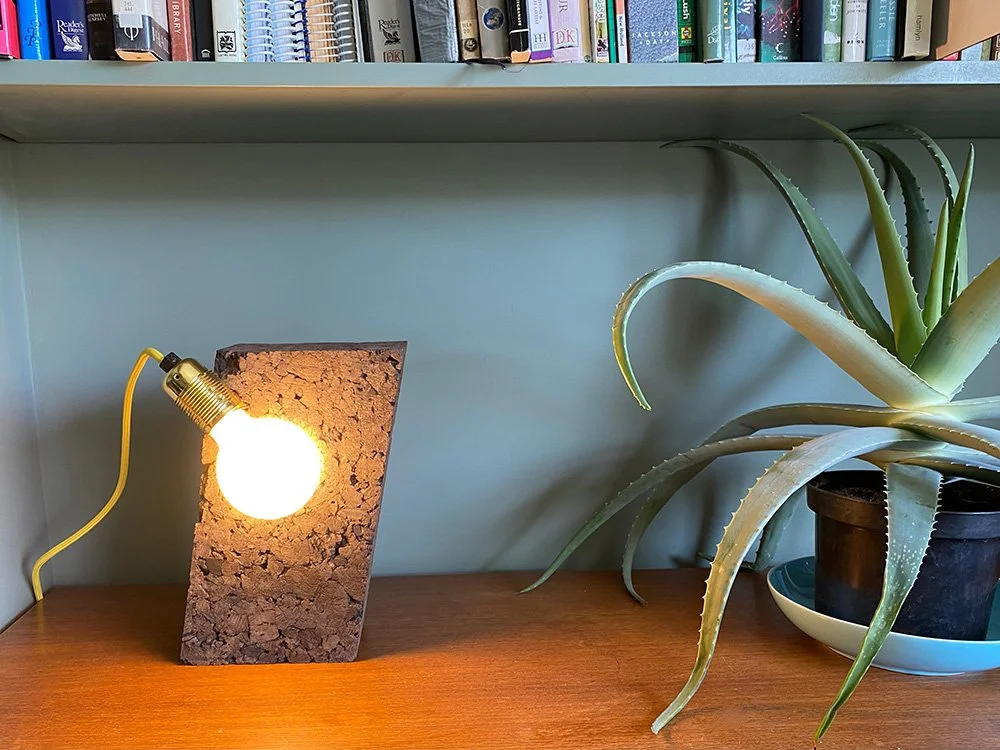Expanding Cork
Mining the material - cork beyond the wine stopper.
Cork is a fascinating natural and sustainable material; the slowly grown bark of a particular species of oak. Traditionally harvested and used ‘neat’, its main market has been for use in sealing wine bottles. Corks, however, have been under threat from the competition posed by metal screw-top lids and farmers have been searching for new markets for their material. This project invited an investigative and design challenge - to expand the use of the bark in innovative ways. These bird boxes were part of a response to this challenge after an immersive trip around the Portuguese Montado where much of the world’s cork is grown.
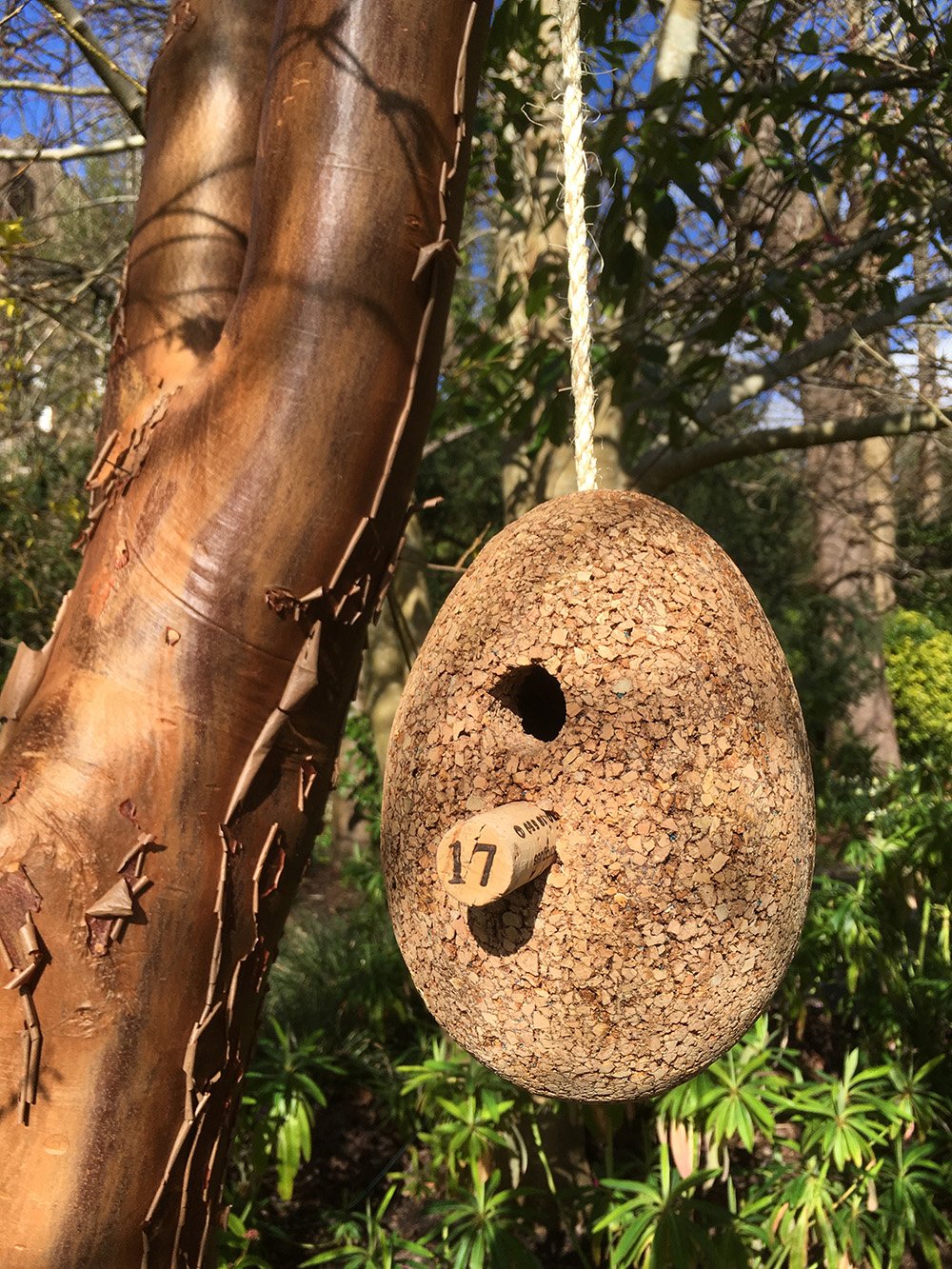
Bird Box - the "Egg". Recycled cork stoppers and tree resin
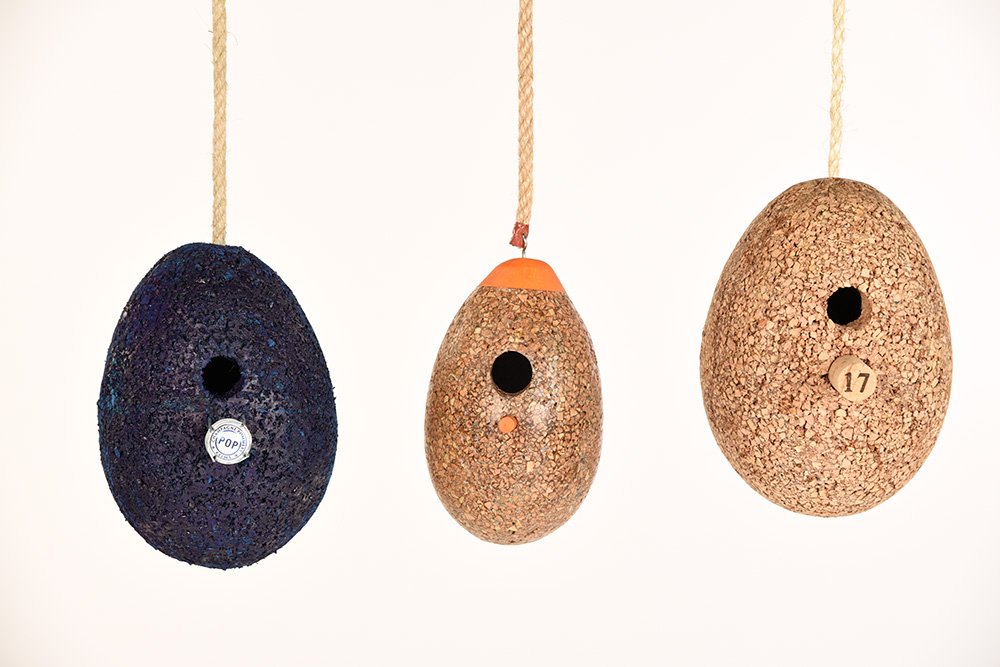
"Egg" and friends - moulded cork, dye and resin
Cork as a material
The cork oak is a slow growing tree and harvested for the bark in 7 yearly cycles. The bark is expertly peeled away using a special tool so as not to damage the growing layer of the tree, the Cambium. It’s an interesting material: thermally efficient, acoustically sound absorbing, fire-resistant, abrasion resistant and incredibly light. Above all it’s natural, renewable and carbon friendly.
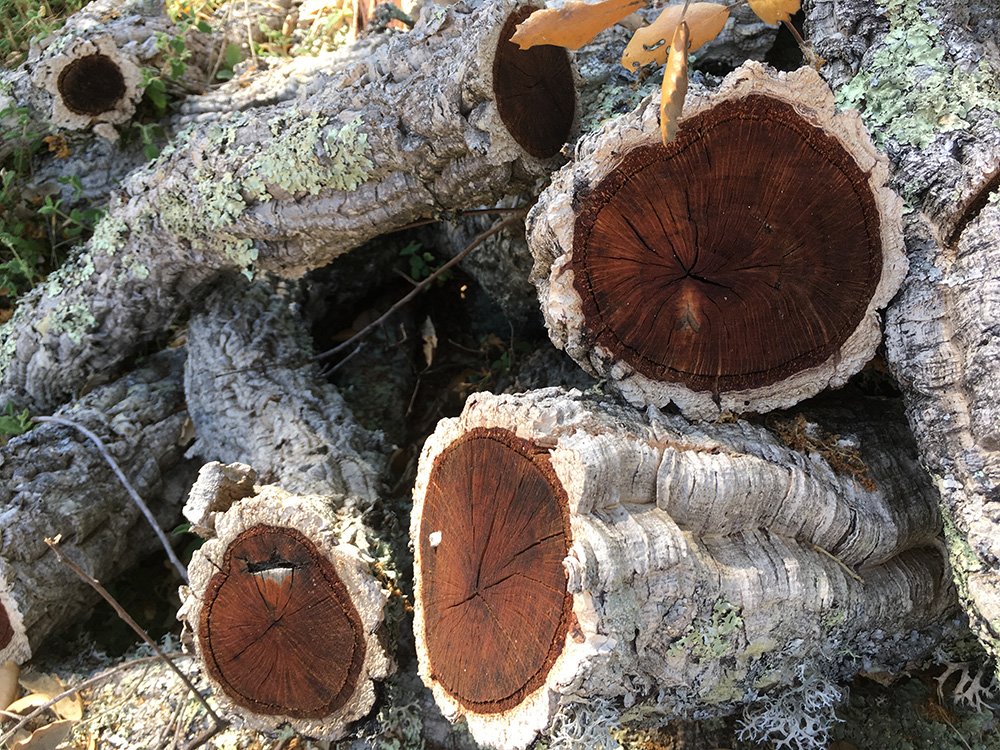
Cork logs
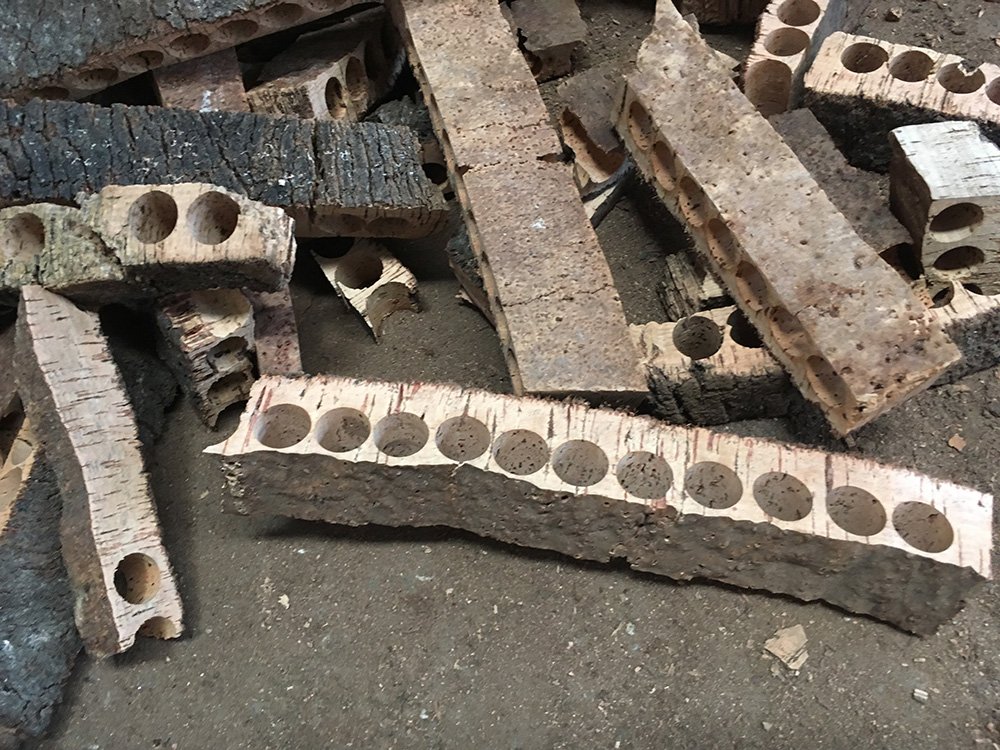
Carcass left from extraction of corks for bottles
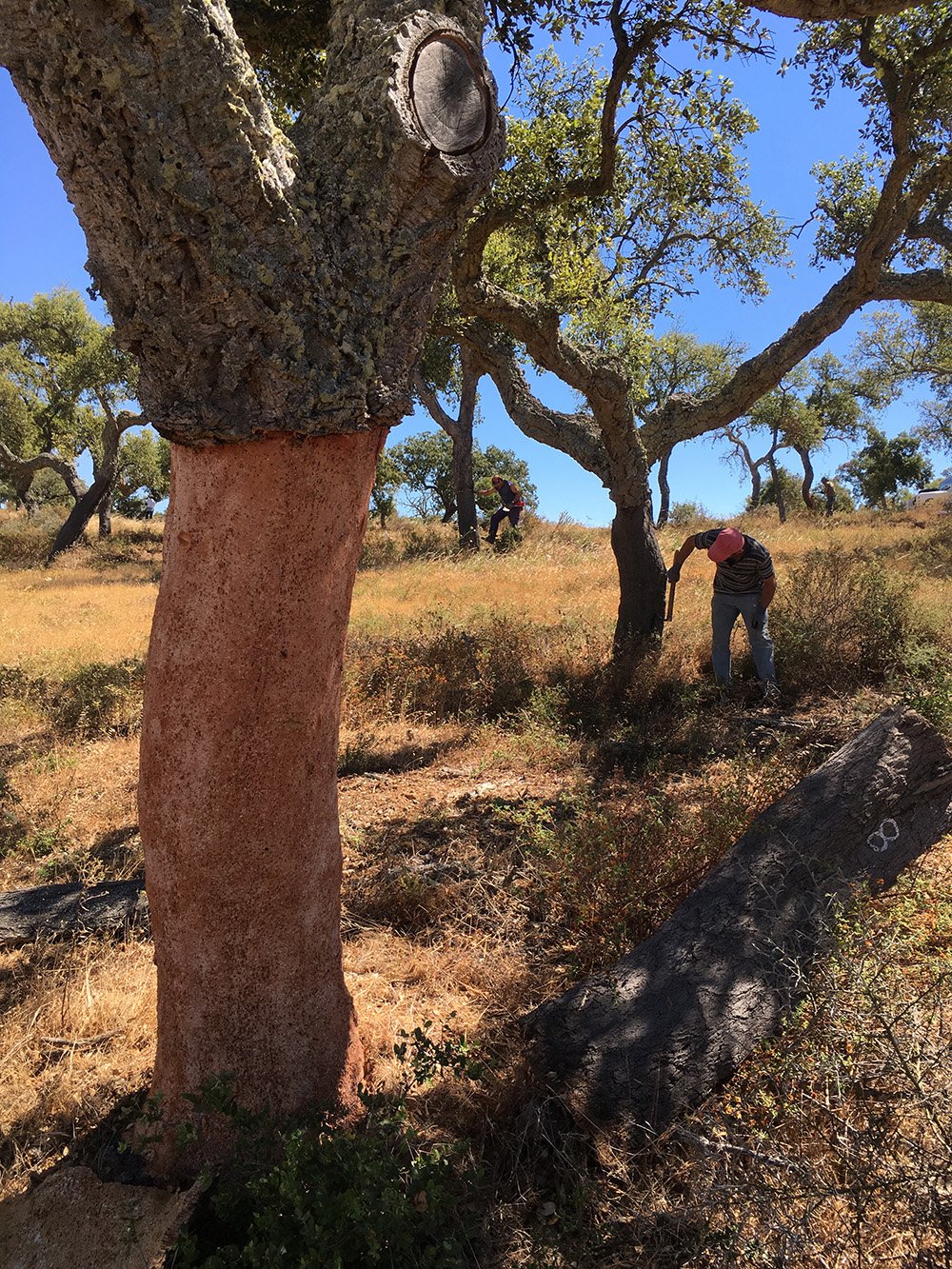
Stripped cork oak tree

Pile of stripped cork bark
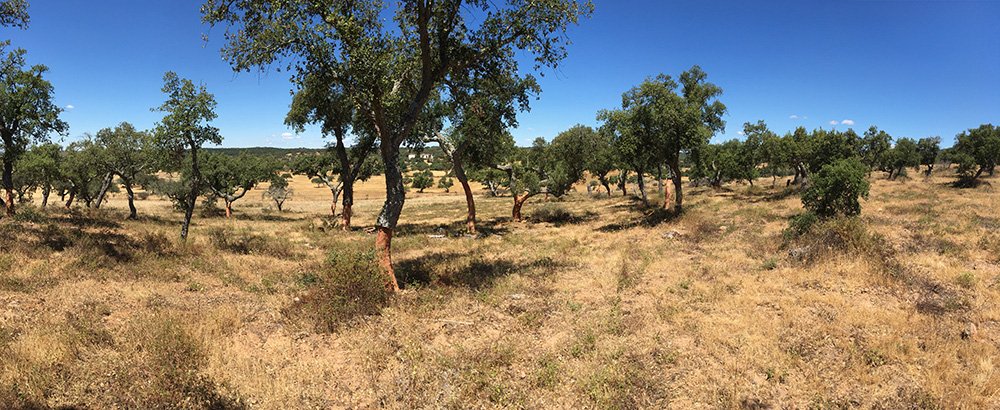
Portuguese Montado
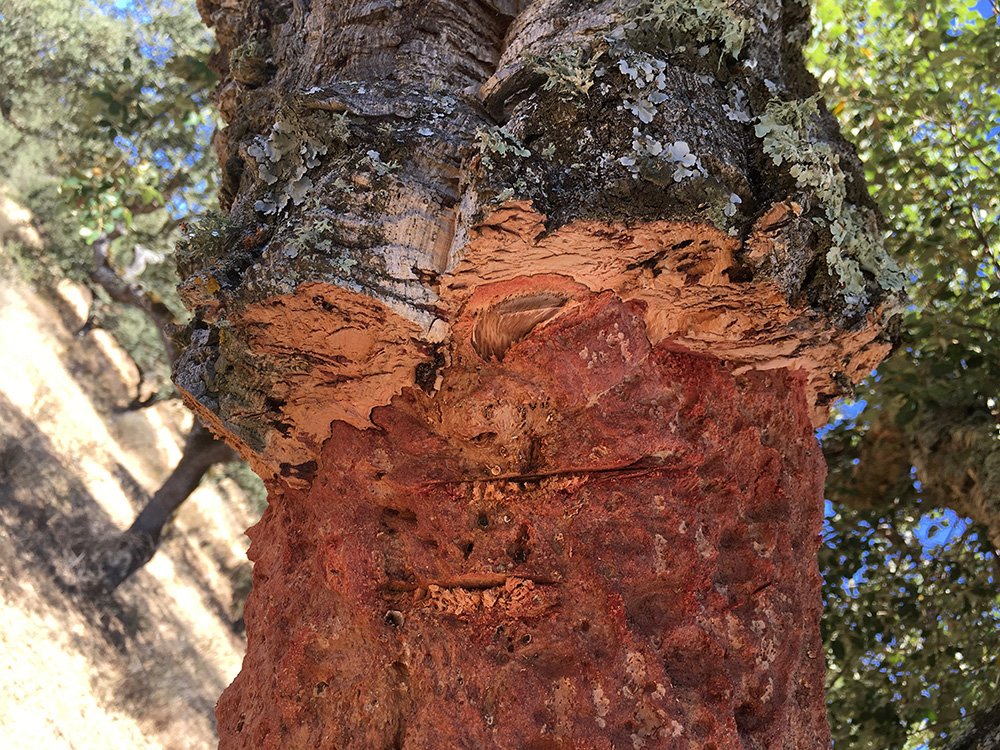
Seven years of bark growth


